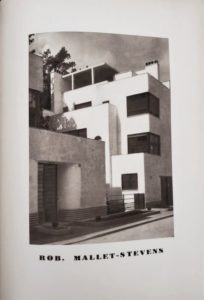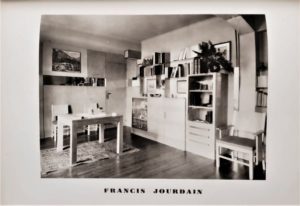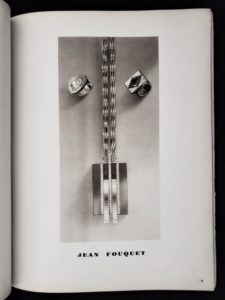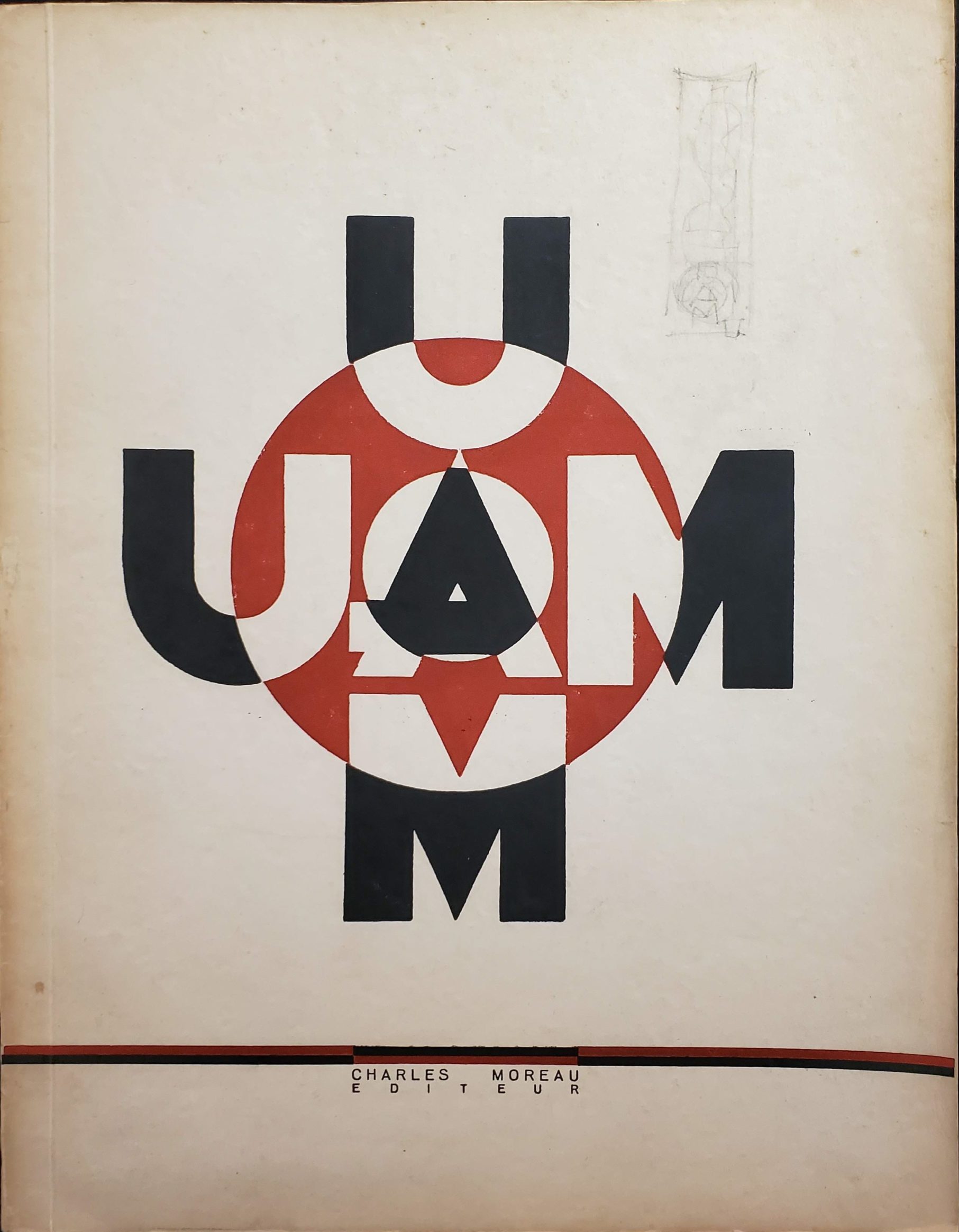The UAM Catalogue is one of many period resources in the Cooper Hewitt, Smithsonian Design Library that chronicle French Art Deco and the shift into modernism in the twentieth century. The UAM (Union des Artistes Modernes) was founded in May, 1929, by a group of French designers, decorators, and architects, led by Robert Mallet-Stevens, who were disillusioned by the conservative aesthetics characteristic of design promoted by artists’ organizations such as SAD (the Société des Artistes-Décorateurs), founded in 1901.

Building designed by Robert Mallet-Stevens
The UAM sought to promote the decorative and applied arts as a profession with great value and benefit to the French economy and its reputation in fashionable design. Many of the artists and designers who joined the UAM were originally members of the SAD, who produced lavish and expensive luxury goods for the affluent, as evidenced by items displayed in the 1925 Paris Exposition Internationale des Arts Décoratifs et Industrieles Modernes.

Interior designed by Francis Jourdain
The UAM rejected the excessive ornament of the past and championed simplicity and functionalism in design, utilizing new materials and manufacturing methods that suited the modern lifestyle. This catalog was the first presentation of the newly formed society, listing the members committed to the UAM’s design principles, and featuring 24 examples of their work. Members included Charlotte Perriand, Le Corbusier, Sonia Delaunay, Jean Puiforcat, Franz Jourdain, René Herbst, Pierre Chareau, Eileen Gray, and Louis Sognot. The library’s copy of the catalogue has the original red- and black-printed cream-colored thick paper cover, and glue binding. The UAM held its first exhibition in 1930, one year after the catalogue’s publication.

Earrings and necklace designed by Jean Fouquet.
The UAM artists designed furniture, interiors, jewelry, glass, and architecture. They eliminated ornament and aimed for a leaner, spare aesthetic, often utilizing cost-effective industrial materials in designs that were functional and affordable for the modern everyman. The UAM held exhibitions every year (except during World War II), and published manifestos in support of other avant-garde movements until the group disbanded in 1958. This small but not insignificant publication documents the early evolution of the new design movement that was modernism.
Much of the UAM members’ work can be seen in the Cooper Hewitt Design Library’s collection of rare and unique Therese Bonney photographs, 1925-1937 . This collection of 4,000 photos documents Bonney’s personal observations of life, architecture, and design in Paris, from 1925-39. Bonney personally knew many of the artist-decorators and architects of the UAM. The subjects of her photographs ranged from objects, to interiors, window displays, and major building complexes, and focused on the impact of modernism on European design.
Elizabeth Broman is a Reference Librarian at the Cooper Hewitt, Smithsonian Design Library.
